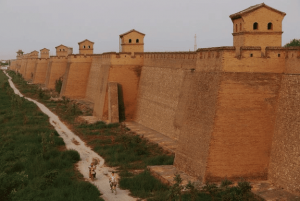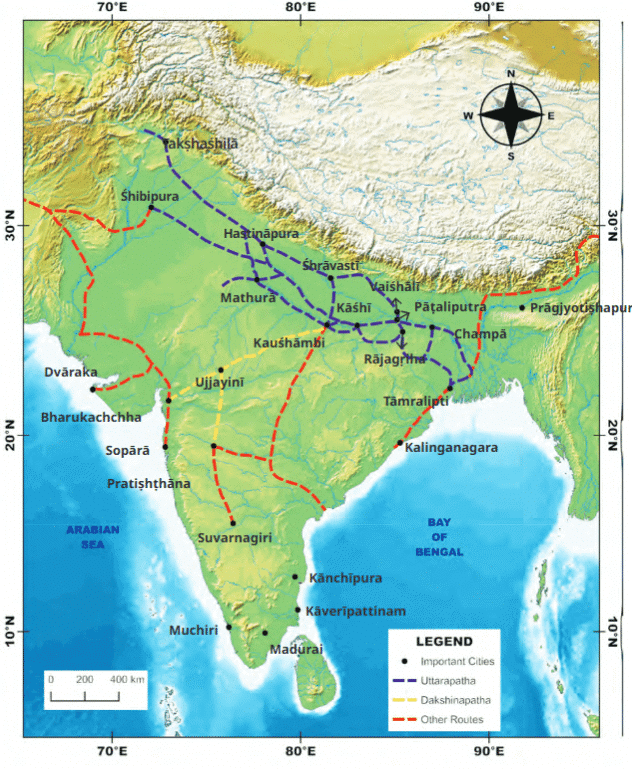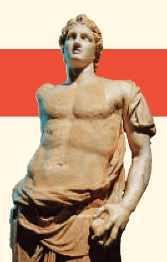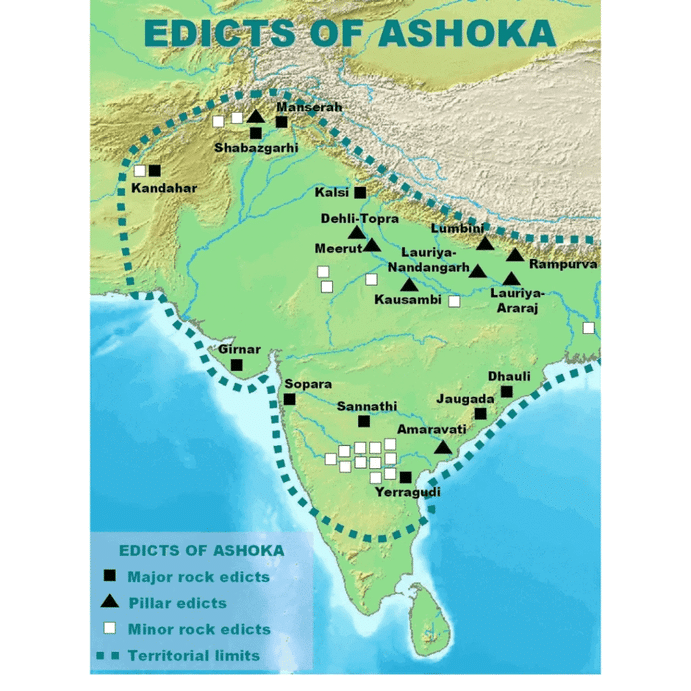VSAQ for Chapter 5 The Rise of Empires Class 7 Social Science NCERT
Important Questions1
Q1: What is an empire?
Answer
An empire is a large area ruled by a powerful emperor who controls many smaller kingdoms.
VSAQ
2
Q2: What is the Sanskrit term for an emperor?
Answer
In Sanskrit, emperors were called samraj, adhiraja, or rajadhiraja.
VSAQ
3
Q3: What did tributary kingdoms offer to the emperor?
Answer
Tributary kingdoms gave tribute like gold, grain, or goods as a sign of loyalty.
VSAQ
4
Q4: What was the role of the capital city in an empire?
Answer
The capital city was the center of administration and economy for the empire.
VSAQ
5
Q5: Why did emperors build fortified cities?
Answer
Fortified cities protected borders and served as strong defense points.
Fortified Citites
VSAQ
6
Q6: What kind of armies did emperors use?
Answer
Emperors used trained armies with elephants, horses, and iron weapons.
VSAQ
7
Q7: How did emperors maintain control over diverse groups?
Answer
Emperors used fair laws and local governance to manage diverse people.
VSAQ
8
Q8: What is one reason emperors expanded their empires?
Answer
Emperors expanded for fame and to be remembered by future generations.
VSAQ
9
Q9: What are guilds also known as?
Answer
Guilds were also known as shrenis.
Trade Routes
VSAQ
10
Q10: Who led the guilds?
Answer
Guilds were led by elected leaders and officers.
VSAQ
11
Q11: What was the main purpose of trade routes?
Answer
Trade routes helped move goods and increased taxes for the empire.
VSAQ
12
Q12: What were two important trade routes in ancient India?
Answer
Uttarapatha and Dakshinapatha were major trade routes.
VSAQ
13
Q13: What was the capital of the Magadha kingdom?
Answer
The capital of Magadha was Pataliputra.
VSAQ
14
Q14: Name the king who founded the Nanda dynasty.
Answer
Mahapadma Nanda founded the Nanda dynasty.
VSAQ
15
Q15: Who defeated the Nanda Empire?
Answer
Chandragupta Maurya defeated the Nanda Empire.
VSAQ
16
Q16: Who was Alexander the Great?
Answer
Alexander was a Greek king who invaded India in 327–325 BCE.
Alexander the Great
VSAQ
17
Q17: Which Indian king did Alexander fight?
Answer
Alexander fought King Porus of the Pauravas in Punjab.
VSAQ
18
Q18: Who was Kauṭilya?
Answer
Kauṭilya was Chandragupta Maurya’s mentor and advisor.
VSAQ
19
Q19: What is the Arthashastra?
Answer
The Arthashastra is a book by Kauṭilya on governance and economics.
VSAQ
20
Q20: What does Saptanga mean?
Answer
Saptanga means “seven parts” of a kingdom according to Kauṭilya.
VSAQ
21
Q21: Who wrote the book Indika about India?
Answer
Megasthenes, a Greek ambassador, wrote Indika.
VSAQ
22
Q22: Which war changed Aśhoka’s views on violence?
Answer
The Kalinga War made Aśhoka turn to peace and non-violence.
VSAQ
23
Q23: What script was used in Aśhoka’s edicts?
Answer
Aśhoka’s edicts were written in Brahmi script.
VSAQ
24
Q24: What is a stūpa?
Answer
A stūpa is a dome-shaped structure used for worship and housing relics.
VSAQ
25
Q25: What symbol from Mauryan art became India’s national emblem?
Answer
The Sarnath lion capital with the dharmachakra became India’s national emblem.
VSAQ
26
Q26: What is the Latin origin of the word 'empire'?
Answer
Imperium, meaning “supreme power.”
VSAQ
27
Q27: Who helped Chandragupta Maurya in establishing the Maurya Empire?
Answer
Kauṭilya (Chanakya).
VSAQ
28
Q28: What was the main contribution of Ashoka’s edicts?
Answer
Promoting Buddhist values and moral duties.
VSAQ
29
Q29: Which battle made Ashoka choose non-violence?
Answer
The Kalinga War.
VSAQ
30
Q30: What was the capital of the Maurya Empire?
Answer
Pataliputra.
Edicts of Ashoka
VSAQ